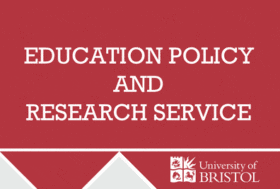How to support students experiencing trauma in your classroom


This article is featured as part of a bitesize CPD unit on supporting children and young people who have experienced trauma
This research review is based on a chapter that was previously published in Muller and Goldenberg (2022), a report in our ‘Education in Times of Crisis’ series: Müller LM and Goldenberg G (2020) Grief, trauma and post-traumatic stress disorder. In: Education in times of crisis: The potential implications of school closures for teachers and students. London: Chartered College of Teaching, pp. 21–24.
Introduction
Responses to trauma can vary according to the age of the child and when the trauma was experienced – either in early childhood or later on in life (Jones and Cureton, 2014). Some children respond to trauma by re-experiencing. This may involve re-enacting themes or events through play or drawing, having nightmares or showing distress when faced with reminders of the traumatic event (Scheeringa et al., 2003). Another symptom is avoidance. Children may avoid eye contact or contact with objects. Avoidance may manifest itself as refusal to participate in activities, to eat, or to socialise, particularly when situations, people or objects act as reminders of the traumatic event. Children may withdraw from a caregiver or teacher. Young children may also regress in developmental areas such as toilet training or speech (Cummings et al., 2017). Hyperarousal is a stress response whereby the body is in a state of high alert. Following trauma, the body continues to act as if it is under threat even if the stressful event is over. Hyperarousal can look like an inability to concentrate on a task, difficulty sleeping, irritability, anxiety and aggressive or destructive behaviour. People who are hyper-aroused are often easily startled and display exaggerated responses (Scheeringa et al., 2003). Some children may also become more clingy as a result of trauma, becoming more demanding of an adult’s attention.
Post-traumatic stress disorder (PTSD) is an anxiety disorder caused by direct or indirect exposure to stressful or frightening events. What differentiates PTSD from a normal reaction to trauma is its intensity and duration. Symptoms may vary with the age of the child, but those lasting over a month after the trauma, including recurrent distressing thoughts, flashbacks and sleep disturbances, should be referred to a mental health professional (Grosse, 2001). Not everyone who experiences trauma will develop PTSD, and children can be supported to manage trauma (Grosse, 2001). During a traumatic experience, a structure and sense of control, and accurate information about what has happened and what will happen next are important in helping children control their thoughts and feelings. Promoting predictability and consistency is helpful (Minahan, 2019). Debriefing is also critical, and this should be child-centered and non-judgmental. All expressions about the trauma are acceptable and should be validated by the listening adult, without probing for further details which may cause distress (Grosse, 2001; Kataoka et al., 2012).
A number of studies have suggested there may be a link between PTSD, including following natural disasters, and lower academic performance. For example, Shannon et al. (1994) who found the 9–19-year-olds reporting symptoms of PTSD in their study to have lower self-reported academic performance three months after a hurricane than those not reporting PTSD symptoms. Gibbs et al. (2019) argue that traumatic experiences can disrupt neuro-maturational processes, affecting the development of working memory and other cognitive processes that are central to academic development, citing evidence from the impact of PTSD on children’s academic development (Teresaka et al., 2015).
What can teachers do to support children experiencing trauma?
A qualitative study (Cummings et al., 2017) interviewed service providers who work with children and families following trauma about the knowledge and skills early childhood education teachers need to support children who have experienced traumatic events. From questionnaires and interviews, the report identified key strategies that teachers can use to create emotionally supportive environments for young children in particular. These include:
- Being attuned: Understanding and anticipating the needs of children and their families, and being able to respond sensitively. Being attuned involves being open and curious about how a child may be feeling, and showing them that you understand and can relate to that feeling.
- Conveying positive regard: Trauma or stress may lead to disruptive or uncooperative behaviour, but including the student as part of the class community, rather than isolating them as the ‘bad child’ is key. Starting afresh after a challenging day, welcoming the child warmly, and finding and communicating the child’s strengths are recommended.
- Collaborating with families and other professionals: Building a positive and respectful relationship with parents and being aware of the experiences and mindset their child is bringing to the classroom.
- Supporting positive social-emotional and communicative responses: Promoting self-regulation through music, play, art and stories. Encouraging students to express their feelings and learn what helps them to relax.
- Rethinking reactions to behaviour: Remain calm and be aware of why children might be behaving the way that they are. Avoid making children feel ashamed of their emotional reactions and instead allow time for them to practise adaptive behaviours.
The report also highlighted that teachers may need to be aware of aspects of the classroom environment that can trigger trauma responses. Children who have been exposed to domestic violence or abuse may be triggered by loud voices, physical touch or fighting between classmates. Darkness and loud noises can also be sensory triggers. Seasonal changes and events can also trigger memories of traumatic events. For this reason, anniversary events need to be carefully managed. The study also identified that although there are some common behavioural patterns that appear in children exposed to trauma, behaviour and emotions manifest differently according to the context and the type of trauma experienced, as well as the individual characteristics of the child.
As a common reaction to trauma is emotional and social isolation, helping children reestablish social relationships and make connections with others supports their wellbeing by promoting stability and recovery (Kataoka et al., 2012).
A two-year research project looking at the impact of Hurricane Katrina on teaching and learning (Alvarez, 2010) found that allowing students to discuss and write about their experiences and stresses was an important part of returning to school. This was not just done when schools first re-opened; students continued needing to revisit and reflect on their experiences over time. Free writing and oral storytelling were used as tools. Building a positive learning environment required finding reasons for celebration and positive incentives for learning. In this context, students had faced extreme trauma and to accommodate changes in their behaviour, once academic lessons resumed, lessons were kept to small increments with lots of repetitive practice and rehearsal. Teachers described these changes in adolescents’ behaviour as including difficulty in acquiring information and maintaining in-depth study, passivity, numbness to learning, being more prone to arguments and needing more affirmation.
School-based trauma interventions such as the Cognitive Behavioural Intervention for Trauma in Schools (CBITS) (Jaycox et al., 2018) have been found to be effective in reducing symptoms of PTSD and depression and improving academic outcomes in a range of contexts (Kataoka et al., 2003; Stein et al., 2003; Jaycox et al., 2010; Kataoka et al., 2011). However, they are designed to be delivered by medical health professionals. A pilot study of its adaption for delivery by teachers in schools (Jaycox et al., 2009) has shown promising results but further research is needed to corroborate these initial findings.
Key takeaways:
- Although there are some common behavioural patterns that appear in children exposed to trauma, responses to trauma can vary according to the context and the type of trauma experienced, as well as the individual characteristics of the child.
- Teachers can use key strategies to create emotionally supportive and positive learning environments for children experiencing trauma.
- Teachers may need to be aware of aspects of the classroom environment that can trigger trauma responses.
Further reading
The National Child Traumatic Stress Network (NCTSN) (2008) Child trauma toolkit for educators. NCTSN
References
- Alvarez D (2010) “I Had To Teach Hard”: Traumatic conditions and teachers in post-Katrina classrooms. The High School Journal 94(1): 28–39.
- Cummings KP, Addante S, Swindell J et al. (2017) Creating supportive environments for children who have had exposure to traumatic events. Journal of Child and Family Studies 26(10): 2728–2741.
- Gibbs L, Nursey J, Cook J et al. (2019) Delayed disaster impacts on academic performance of primary school children. Child Development 90(4): 1402–1412.
- Grosse SJ (2001) Children and Post Traumatic Stress Disorder: What Classroom Teachers Should Know. ERIC Digest. Available at: https://www.ericdigests.org/2002-3/post.htm (accessed 4 May 2020).
- Jaycox LH, Langley AK, Stein BD et al. (2009) Support for Students Exposed to Trauma: A Pilot Study. School Mental Health 1(2): 49–60.
- Jaycox LH, Cohen JA, Mannarino AP et al. (2010) Children’s mental health care following Hurricane Katrina: A field trial of trauma-focused psychotherapies. Journal of Traumatic Stress 23(2): 223–231.
- Jaycox LH Langley AK, Hoover SA (2018) Cognitive Behavioural Intervention for Trauma in Schools (CBITS). Santa Monica, California: RAND Corporation.
- Jones LK and Cureton JL (2014) Trauma redefined in the DSM-5: Rationale and implications for counseling practice. Professional Counselor 4(3). Available at: https://tpcjournal. nbcc.org/2014/07/03/trauma-redefined-in-the-dsm-5-rationale-and-implications-forcounseling-practice/ (accesseed 4 May 2020).
- Kataoka SH, Stein BD, Jaycox LH et al. (2003) A school-based mental health program for traumatized Latino immigrant children. Journal of the American Academy of Child and Adolescent Psychiatry 42(3): 311–318.
- Kataoka S, Jaycox LH, Wong M et al. (2011) Effects on school outcomes in low-income minority youth: Preliminary findings from a community-partnered study of a school-based trauma intervention. Ethnicity and Disease 21: S1-71–S1-77.
- Kataoka S, Langley AK, Wong M et al. (2012) Responding to students with posttraumatic stress disorder in schools. Child and Adolescent Psychiatric Clinics 21(1): 119–13.
- Minahan J (2019) Trauma-Informed Teaching Strategies. Educational Leadership 77(2): 30–35.
- Scheeringa MS, Zeanah CH, Myers L et al. (2003) New findings on alternative criteria for PTSD in preschool children. Journal of the American Academy of Child & Adolescent Psychiatry 42(5): 561-570.
- Shannon MP, Lonigan CJ, Finch AJ Jr et al. (1994) Children exposed to disaster: I. Epidemiology of post-traumatic symptoms and symptom profiles. Journal of the American Association of Child and Adolescent Psychiatry 33: 80–93.
- Stein BD, Jaycox LH, Kataoka SH, et al. (2003) A mental health intervention for schoolchildren exposed to violence: a randomized controlled trial. JAMA 290(5):603–611.
- Terasaka, A, Tachibana, Y, Okuyama, M, & Igarashi, T (2015) Postraumatic stress disorder in children following natural disasters: Assytematic review of the long-term follow-up studies. International Journal of Child, Youth and Family Studies 6: 111– 133.










This was a very informative start to my study and interest in this area. It places early trauma in the context of the classroom and opens the door for further reading and study.
This links in with Safety Inventions behaviour training and the awareness of trauma.